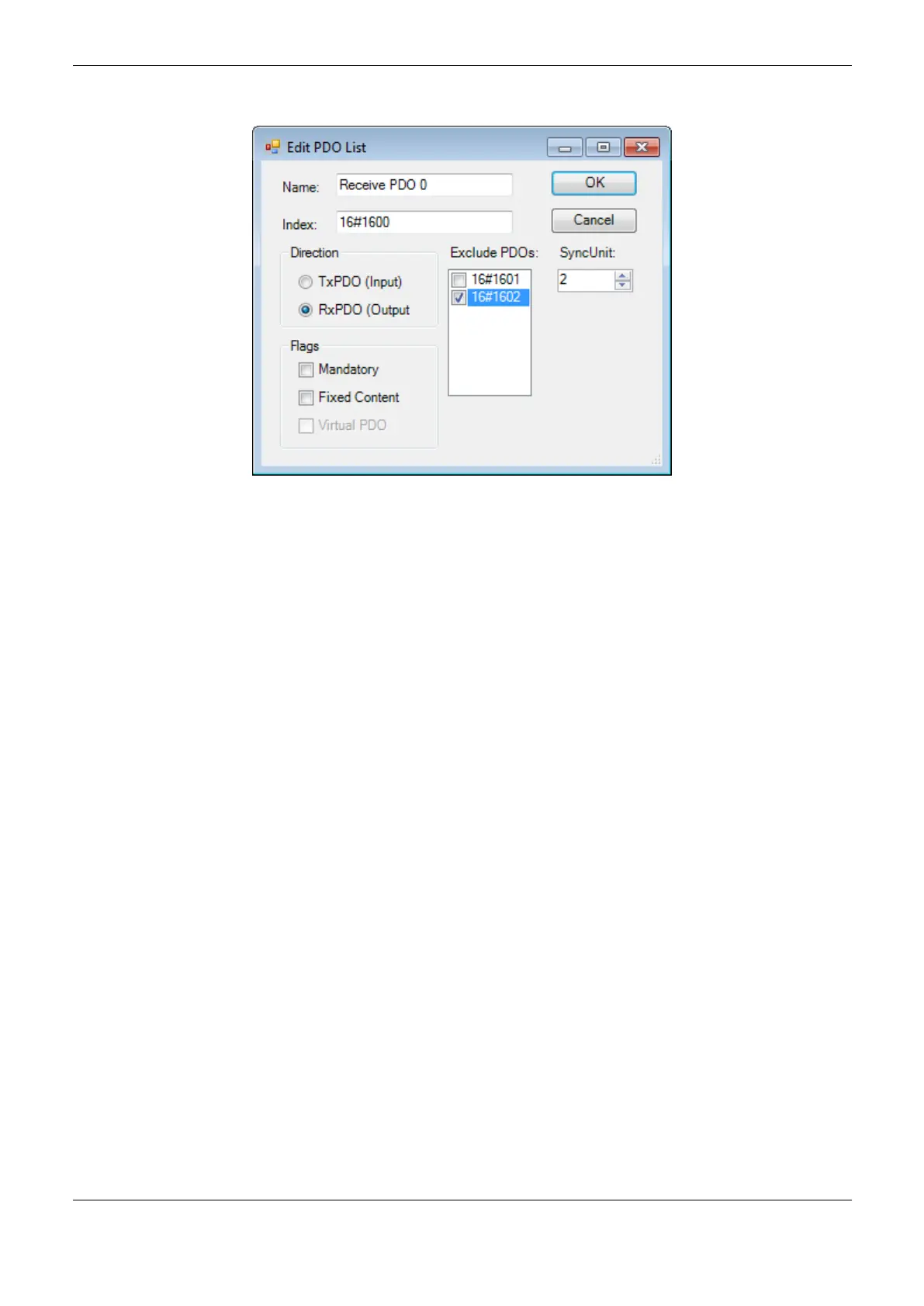4. Configuration
149
Editing the PDO List
Figure 4-57. Edit PDO List Dialog
This dialog is opened through the context menu from the PDO List area, presented in Figure 4-56.
Below are some explanations on the configuration options presented in this dialog.
Name: Name of the PDO entry.
Index: Index of the PDO in being edited.
TxPDO (Input): If activated, the PDO will be transferred from the Master to the Slave.
RxPDO (Output): If activated, the PDO will be transferred from the Master to the Slave.
Mandatory: The PDO is necessary and can’t be unchecked in the PDO Assignment area.
Fixed Content: The PDO content is fixed and can’t be changed. It’s not possible to add entries in
the PDO Content panel.
Virtual PDO: Reserved for future use.
Exclude PDOs: It’s possible to define a list of PDO that can, or can’t, be selected along with the
PDO being edited in the PDO Assignment area, or in the Process Data tab. If a PDO is marked in
this list, it can’t be selected, turning into gray in the PDO Assignment area when the PDO in
edition is selected.
SyncUnit: ID of the Sync Manager the PDO shall assigned to.
Definition of the PDO Content
This dialog is accessed through the context menu in the PDO Content area, and its content, beyond
the possibility to access this windows, varies according to the EtherCAT Slave in use.

